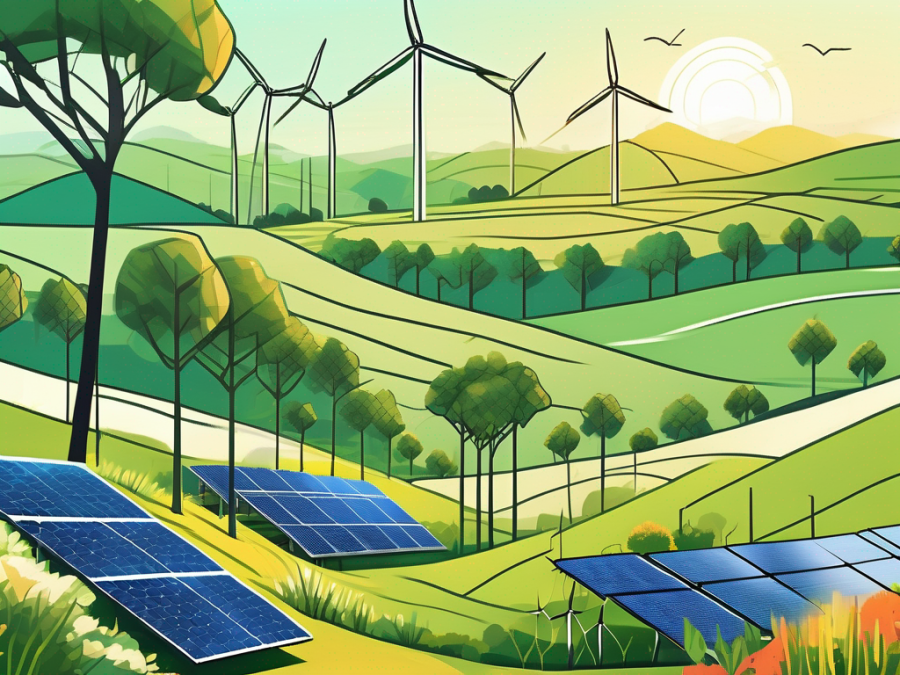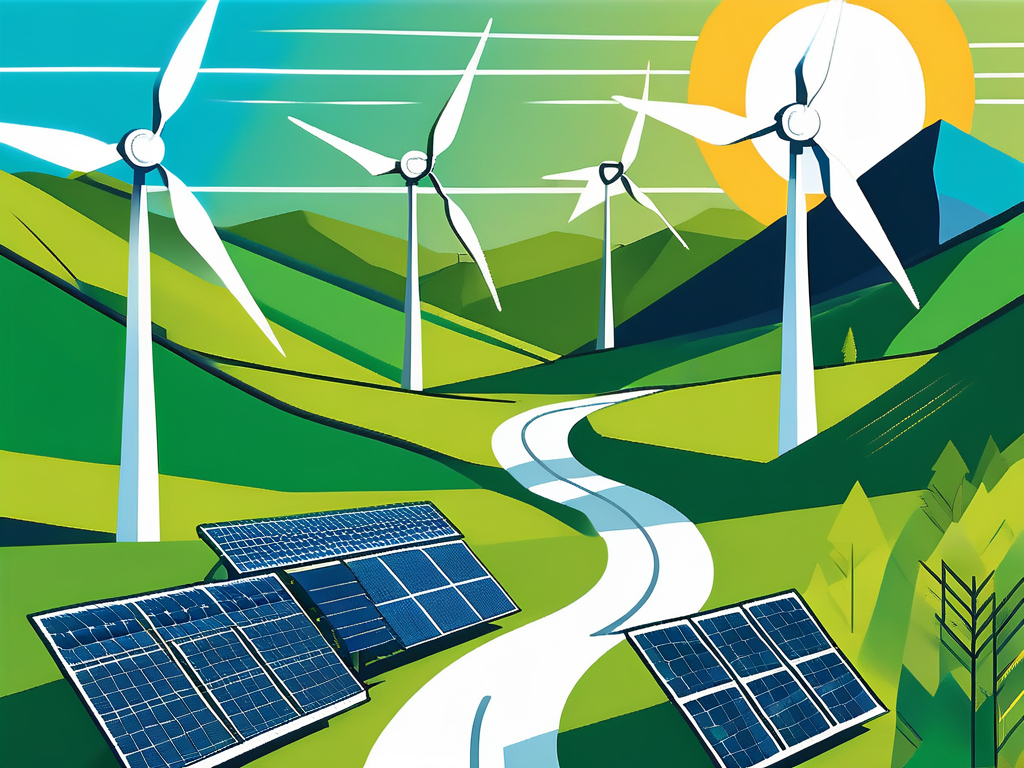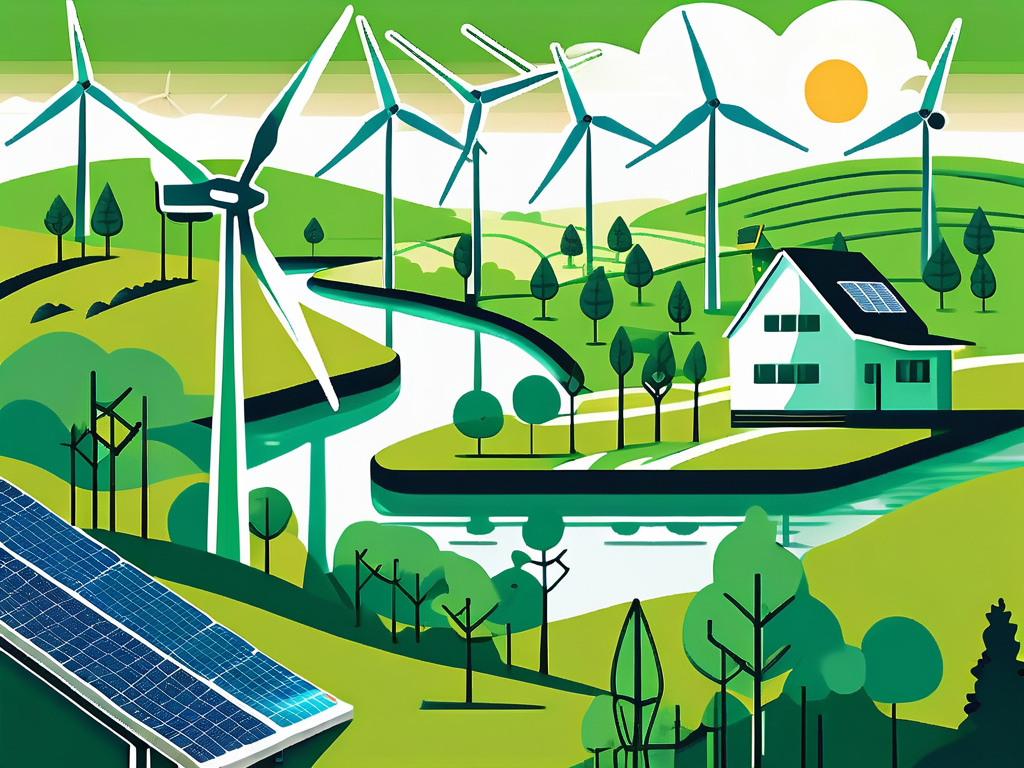
As the world grapples with the pressing issue of climate change and the urgent need for sustainable development, green power emerges as a beacon of hope. This article delves into the concept of green power, its current status, environmental impacts, economic implications, and technological advancements, illustrating how this approach could illuminate a more sustainable future.
Understanding the Concept of Green Power
Defining Green Power
Green power refers to energy that is generated from renewable energy resources which have minimal environmental impact. This includes energy produced from sources such as solar, wind, geothermal, hydroelectric, and biomass. Unlike fossil fuels, green power is sustainable and replenished naturally, making it a crucial component in reducing greenhouse gas emissions and fossil fuel depletion.

The concept extends beyond mere energy generation; it embodies a holistic approach to energy consumption and sustainability. By harnessing these resources, societies can reduce their reliance on non-renewable energy sources, paving the way for a cleaner and safer planet. Additionally, the adoption of green power can stimulate economic growth by creating jobs in renewable energy sectors, from manufacturing solar panels to installing wind turbines. This not only contributes to local economies but also fosters innovation and technological advancements in energy efficiency.
The Science Behind Green Power
The science of green power is rooted in the utilization of natural energy cycles. For example, solar power harnesses sunlight using photovoltaic cells, while wind power captures air movement with turbines. Hydroelectric power creates energy by flowing water, and biomass energy derives from organic materials.
Each of these technologies functions through different principles of physics and engineering, yet they all share a common goal: to generate clean energy. Furthermore, advancements in storage technology, such as batteries, allow for the efficient use of this energy, even when the natural resources are not directly available. This is particularly important for intermittent sources like solar and wind, where energy generation can fluctuate based on weather conditions. The integration of smart grids and energy management systems also plays a vital role in optimizing the distribution and usage of green power, ensuring that energy is available when and where it is needed most. As research continues to evolve, the potential for even more innovative solutions in green power generation and storage becomes increasingly promising, paving the way for a sustainable energy future.
The Current State of Green Power
Global Green Power Statistics
Today, the growth of green power is undeniable. According to the International Renewable Energy Agency (IRENA), globally, renewable energy capacity has surged, reaching over 2800 GW in installed capacity. Solar and wind power are leading this charge, contributing significantly to energy systems across various nations.

Furthermore, a report by the World Energy Council highlights that renewables accounted for approximately 29% of global electricity generation in 2021. This trend reflects a robust commitment by numerous countries to invest in more sustainable energy solutions. The increase in renewable energy capacity is not just a statistic; it represents a paradigm shift towards a more sustainable future, with nations recognizing the urgent need to combat climate change and reduce greenhouse gas emissions. Innovations in technology, such as improved battery storage and smart grid systems, are enhancing the efficiency and reliability of renewable energy sources, making them more accessible to both consumers and businesses alike.
Leading Countries in Green Power
Countries like China, the United States, and Germany are at the forefront of the green power revolution. China is the largest producer of both solar panels and wind turbines and is investing heavily in innovative renewable projects. This investment is not limited to domestic needs; China is also positioning itself as a global leader in the renewable energy market, exporting technology and expertise to developing countries seeking to enhance their energy infrastructure.
The United States, with a combination of state-level initiatives and federal backing, has significantly expanded its wind and solar infrastructure. The recent surge in corporate investments in renewable energy, driven by both economic incentives and a growing awareness of corporate social responsibility, has further accelerated this growth. Germany has set ambitious goals for energy transition through its Energiewende policy, aiming to phase out nuclear power and fossil fuels by increasing renewable energy use. This commitment has not only transformed Germany’s energy landscape but has also inspired other nations to adopt similar strategies, showcasing the potential for a global transition to sustainable energy.
- China: Largest producer of solar panels and wind turbines.
- United States: Strong investments in both wind and solar energy.
- Germany: Pioneering energy transition towards renewable sources.
The Environmental Impact of Green Power
Green Power and Climate Change
One of the most profound advantages of green power is its potential to mitigate climate change. Transitioning from fossil fuels to renewable sources can drastically reduce carbon emissions, which are a primary driver of global warming. According to recent studies, renewable energy could avoid up to 70% of projected greenhouse gas emissions by 2050 if scaled up effectively.
Additionally, green power initiatives often come with significant co-benefits, such as improved air quality and reduced health risks associated with pollution, contributing further to climate resilience and sustainability. The adoption of solar panels and wind turbines not only decreases reliance on coal and natural gas but also fosters energy independence, allowing communities to harness local resources and reduce their vulnerability to global energy market fluctuations.
Furthermore, the economic implications of green power are noteworthy. Investments in renewable energy technologies can stimulate job creation in manufacturing, installation, and maintenance sectors. As the market for green technologies expands, it opens up new opportunities for innovation and entrepreneurship, driving a sustainable economic model that prioritizes environmental stewardship while enhancing community well-being.
Green Power and Biodiversity
The relationship between green power and biodiversity is complex but generally positive. While the construction of renewable energy facilities can impact local ecosystems, careful planning and technology can mitigate these effects. For instance, wind farms are increasingly being situated offshore to minimize land use and wildlife disruption.
Moreover, the shift towards green power often includes practices that support biodiversity, such as restoring habitats and using sustainable materials in energy production. Thus, when implemented responsibly, green initiatives can enhance ecological health alongside reducing emissions. In addition, many renewable energy projects incorporate wildlife-friendly designs, such as bird-safe wind turbine technology and solar farms that allow for agricultural activities underneath, promoting a harmonious coexistence between energy production and natural habitats.
Furthermore, the integration of green power into urban planning can lead to the creation of green spaces that serve as crucial habitats for various species. Urban solar gardens and green roofs not only contribute to energy generation but also provide essential ecosystems that support pollinators and other wildlife, fostering biodiversity in densely populated areas. This holistic approach to energy and land use highlights the potential of green power to contribute positively to both human and ecological communities, reinforcing the interconnectedness of environmental health and sustainable energy practices.
The Economic Implications of Green Power
Job Creation in the Green Power Sector
The green power sector is a burgeoning source of employment, rivaling traditional energy sectors. According to the International Renewable Energy Agency, more than 11 million people are currently employed in renewable energy worldwide, and this number is expected to grow as investments in green technologies increase.
Jobs in this sector range from manufacturing and installation to maintenance and management. As technologies evolve, educational programs are also adapting to prepare a skilled workforce for the energy transition, offering relevant training and job opportunities.
The Cost of Green Power Vs. Traditional Energy
Historically, the costs associated with renewable energy technologies were significantly higher than those for traditional fossil fuels. However, advancements in technology and economies of scale have led to a dramatic reduction in costs. For example, the cost of solar photovoltaic systems has plummeted by over 80% since 2010.
Today, in many regions, green power is not only competitive with traditional energy sources but often cheaper. This shift in cost dynamics supports broader adoption and significant investments from both private and public sectors, accelerating the transition to a sustainable energy future.
Technological Advancements in Green Power
Innovations in Solar Energy
The field of solar energy is witnessing exciting innovations, from improved efficiency in photovoltaics to developments in solar thermal technologies. Emerging materials like perovskite solar cells promise to increase efficiency dramatically while reducing production costs.

Additionally, integration of solar energy with smart grids is enhancing the ability to store and deliver energy more efficiently, maximizing the benefits of renewable energy sources. These advancements position solar power as one of the most viable energy sources for the future.
The Rise of Wind Power
Wind power has also seen transformative improvements with the advent of larger and more efficient turbine designs. Floating offshore wind farms are an exciting new frontier, allowing for energy collection in deep waters where wind resources are abundant.
These innovations are not only optimizing energy capture but also reducing the ecological footprint of wind energy production, further reinforcing its place in the sustainable energy landscape.
In conclusion, the potential of green power is bright and multifaceted. As nations and communities pursue cleaner, more sustainable energy options, the benefits will resonate across environmental, economic, and social spheres, leading us toward a resilient future powered by renewable energy.
